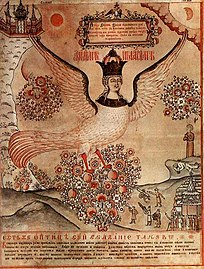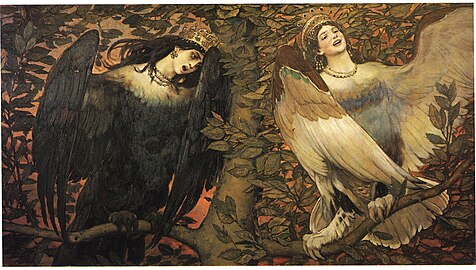
The phoenix is an immortal bird that cyclically regenerates or is otherwise born again. While it is part of Greek mythology, it has analogs in many cultures, such as Egyptian and Persian mythology. Associated with the sun, a phoenix obtains new life by rising from the ashes of its predecessor. Some legends say it dies in a show of flames and combustion, while others that it simply dies and decomposes before being born again. In the Motif-Index of Folk-Literature, a tool used by folklorists, the phoenix is classified as motif B32.

In Greek mythology, sirens are female humanlike beings with alluring voices; they appear in a scene in the Odyssey in which Odysseus saves his crew's lives. Roman poets place them on some small islands called Sirenum scopuli. In some later, rationalized traditions, the literal geography of the "flowery" island of Anthemoessa, or Anthemusa, is fixed: sometimes on Cape Pelorum and at others in the islands known as the Sirenuse, near Paestum, or in Capreae. All such locations were surrounded by cliffs and rocks.

Baba Yaga is an enigmatic or ambiguous character from Slavic folklore who has two opposite roles. In some motifs she is described as a repulsive or ferocious-looking old woman who fries and eats children, while in others she is a nice old woman who helps out the hero. She is often associated with forest wildlife. Her distinctive traits are flying around in a wooden mortar, wielding a pestle, and dwelling deep in the forest in a hut standing on chicken legs.
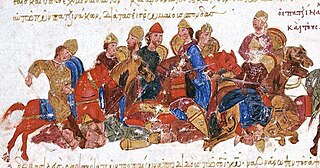
The Pechenegs or Patzinaks were a semi-nomadic Turkic people from Central Asia who spoke the Pecheneg language. In the 9th and 10th centuries, the Pechenegs controlled much of the steppes of southeast Europe and the Crimean Peninsula. In the 9th century the Pechenegs began a period of wars against Kievan Rus', and for more than two centuries launched raids into the lands of Rus', which sometimes escalated into full-scale wars.

The samodiva, samovila or vila, are woodland fairies or nymphs found in South and West Slavic folklore.
Enchantress most commonly refers to:

In Slavic mythology and folklore, the Firebird is a magical and prophetic glowing or burning bird from a faraway land which is both a blessing and a harbinger of doom to its captor.

The Legend of the Invisible City of Kitezh and the Maiden Fevroniya is an opera in four acts by Nikolai Rimsky-Korsakov. The libretto was written by Vladimir Belsky, and is based on a combination of two Russian legends: those of Saint Fevroniya of Murom and of the city of Kitezh, which became invisible when attacked by the Tatars. The opera was completed in 1905, and the premiere performance took place at the Mariinsky Theatre in St. Petersburg, on February 7, 1907, the last in Rimsky-Korsakov's lifetime.
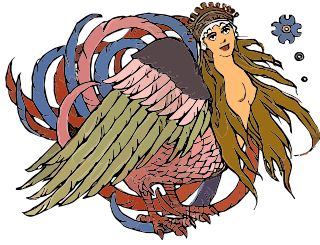
The Alkonost is a legendary woman-headed bird in Slavic folklore. Alkonost is more likely an individual character, as was noted in some legends about this bird.

Aristarkh Vasilyevich Lentulov was a major Russian avant-garde artist of Cubist orientation who also worked on set designs for the theatre.

Gamayun is a prophetic bird of Russian folklore. It is a symbol of wisdom and knowledge and lives on an island in the mythical east, close to paradise. She is said to spread divine messages and prophecies, as she knows everything of all creation, gods, heroes, and man. Like the Sirin and the Alkonost, other creatures likewise deriving ultimately from the Greek myths and siren mythology, the Gamayun is normally depicted as a large bird with a woman's head. In the books of the 17th-19th centuries, Gamayun was described as a legless and wingless bird, ever-flying with the help of a tail, foreshadowing the death of statesmen by her fall.

The tradition of egg decoration in Slavic cultures originated in pagan times, and was transformed by the process of religious syncretism into the Christian Easter egg. Over time, many new techniques were added. Some versions of these decorated eggs have retained their pagan symbolism, while others have added Christian symbols and motifs.
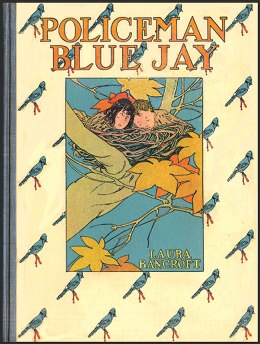
Policeman Bluejay or Babes in Birdland is a children's novel written by L. Frank Baum and illustrated by Maginel Wright Enright. First published in 1907, Jack Snow considered it one of the best of Baum's works.

Kievan Rus', also known as Kyivan Rus', was the first East Slavic state and later an amalgam of principalities in Eastern Europe from the late 9th to the mid-13th century. Encompassing a variety of polities and peoples, including East Slavic, Norse, and Finnic, it was ruled by the Rurik dynasty, founded by the Varangian prince Rurik. The name was coined by Russian historians in the 19th century to describe the period when Kiev was at the center. At its greatest extent in the mid-11th century, Kievan Rus' stretched from the White Sea in the north to the Black Sea in the south and from the headwaters of the Vistula in the west to the Taman Peninsula in the east, uniting the East Slavic tribes.

Kostroma is an East Slavic fertility goddess. Her name is derived from костёр (kostyor), the Russian word for "bonfire".

The Russian folklore, i.e., the folklore of Russian people, takes its roots in the pagan beliefs of ancient Slavs and now is represented in the Russian fairy tales. Epic Russian bylinas are also an important part of Slavic paganism. The oldest bylinas of Kievan cycle were recorded in the Russian North, especially in Karelia, where most of the Finnish national epic Kalevala was recorded as well.

Deathless is an alternate history novel by American writer Catherynne M. Valente, combining the Russian fairy tale The Death of Koschei the Deathless with the events and aftermath of the Russian Revolution. The novel follows the life of Marya Morevna as she transforms from a young child witnessing the revolution to her newfound position as bride after her marriage with Koschei, Tsar of Life. The book is divided into six parts and is told primarily through the third person perspective of Marya Morevna, however, it does feature other characters such as Ivan Tsarevich.
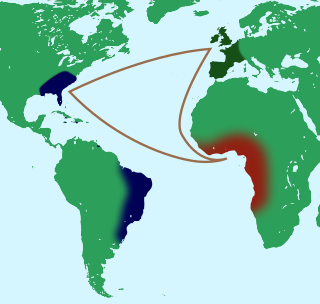
Flying Africans are figures of African diaspora legend who escape enslavement by a magical passage back over the ocean. Most noted in Gullah culture, they also occur in wider African-American folklore, and in that of some Afro-Caribbean peoples.


